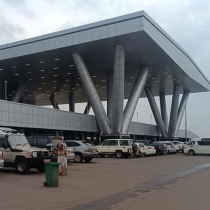Uganda's Private Sector Sees First Decline in Over a Year Amidst Reduced Customer Spending
In March, Uganda's private sector experienced a downturn in business conditions for the first time in 16 months, marking an end to a consistent period of growth. This setback was primarily attributed to decreases in output and new orders, driven by a significant drop in customer spending power and a decrease in available cash. Despite these challenges, companies remain optimistic, anticipating an uptick in business activities, employment, and input purchasing in the near future.
Even as firms faced increased costs due to higher demand for materials and a rise in employment rates, there was a noted improvement in the time it took to receive inputs. However, this did not prevent an escalation in overall expenses, prompting businesses to adjust their selling prices upwards to manage the higher costs.
Christopher Legilisho from Stanbic Bank noted a significant dip in the headline Purchase Managers' Index (PMI) to 49.3 in March from February's 51.7. This decline signals the first downturn in Uganda's private sector's health since mid-2022. Legilisho pointed out the mixed fortunes across sectors; while industrial output grew, agriculture and services sectors boosted their workforce, yet construction and industry saw a reduction in jobs.
Despite a slowdown in sales, there's a positive outlook on future business, with firms expecting an increase in customer demand and output in the coming year. This anticipation has kept purchasing activities buoyant, continuing a growth trend that started in late 2022. Prices for goods and services were hiked for the twelfth consecutive month as businesses sought to offset increased operational costs against a backdrop of robust employment growth.
Sector-wise, the report delved into employment trends showing growth in agriculture and services but a decrease in construction and industry, with wholesale and retail maintaining steady employment levels. Companies have managed to reduce backlogs thanks to a dip in new orders, a trend that has been ongoing except for a brief period in December 2023.
Rising operational costs, attributed to increased prices for raw materials, rent, fuel, and utility bills, have put additional financial pressure on businesses. This broad-based increase in input costs has led firms to raise their selling prices, especially in the industry, wholesale & retail, and services sectors, aiming to transfer the burden of these heightened expenses to consumers.
Links
- 100 views












































Join the conversation